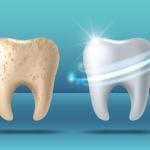A captivating smile is often considered the universal language of happiness and positivity. It’s a powerful aspect of human expression, impacting social interactions, confidence levels, and self-esteem. The art and science behind creating the perfect smile fall under the realm of “Smile Design,” a comprehensive approach that combines aesthetic principles with dental expertise to enhance and transform smiles. This article aims to delve into the intricate world of smile design, exploring its components, processes, and significance.
The Importance of Smile Design
A smile is more than just the arrangement of teeth; it’s a reflection of one’s personality and emotions. An aesthetically pleasing smile can boost an individual’s self-confidence, leading to improved mental well-being and social interactions. Smile design is not only about achieving a visually appealing outcome but also ensuring optimal functionality and oral health.
Components of Smile Design
- Aesthetic Elements
- Functional Aspects
- Personalization and Customization
Aesthetic Elements
- Tooth Shape and Size
- Tooth Color
- Alignment and Symmetry
Tooth Shape and Size
The shape and size of teeth play a crucial role in smile design. They should harmonize with facial features and complement the individual’s overall appearance.
Tooth Color
The color of teeth influences the brightness of a smile. Achieving the right shade involves considerations of natural tooth color, skin tone, and personal preferences.
Alignment and Symmetry
Proper alignment and symmetry of teeth contribute significantly to an attractive smile. Orthodontic treatments, such as braces or aligners, can help achieve this balance.
Functional Aspects
- Occlusion and Bite
- Gum Contour
Occlusion and Bite
Proper occlusion (how upper and lower teeth come together) ensures functional harmony and prevents issues like bruxism (teeth grinding) or temporomandibular joint disorders (TMD).
Gum Contour
The shape and health of the gums are essential in framing the teeth. Gum contouring procedures can correct uneven gum lines and enhance the overall smile.
Personalization and Customization
- Patient Preferences
- Digital Smile Design (DSD)
Patient Preferences
Understanding the patient’s desires and expectations is fundamental. A collaborative approach between the dentist and the patient helps tailor the smile design to individual preferences.
Digital Smile Design (DSD)
Advanced technology allows dentists to digitally plan and visualize the anticipated results, enabling better communication and precise execution of the desired outcome.
The Smile Design Process
- Consultation and Assessment
- Treatment Planning
- Mock-Up and Preview
- Treatment Execution
- Follow-up and Maintenance
Consultation and Assessment
The process begins with an in-depth consultation where the dentist evaluates the patient’s dental health, facial structure, and desired outcomes. This phase involves discussions about concerns, expectations, and potential treatment options.
Treatment Planning
Based on the assessment, a personalized treatment plan is devised. This may include a combination of procedures such as teeth whitening, orthodontics, dental veneers, crowns, or gum reshaping.
Mock-Up and Preview
Utilizing digital tools or physical models, a mock-up of the anticipated smile is created. This allows the patient to visualize and provide feedback before the actual procedures commence.
Treatment Execution
Once the treatment plan is finalized, the implementation phase begins. Procedures may vary from simple cosmetic enhancements to complex restorative surgeries, depending on the individual’s needs.
Follow-up and Maintenance
Post-treatment, regular follow-ups are crucial to monitor the success of the procedures. Maintenance through proper oral hygiene practices and periodic dental visits ensures the longevity of the enhanced smile.
Challenges and Innovations in Smile Design
- Individual Variation
- Technical Expertise
- Digital Technology
- Material Advancements
Individual Variation
Each person’s dental structure and facial features differ, making it challenging to create a universally applicable smile design template.
Technical Expertise
Achieving the desired outcome requires a high level of skill, artistry, and understanding of dental aesthetics.
Digital Technology
Advanced imaging, 3D printing, and simulation software aid dentists in precise planning and execution.
Material Advancements
Constant improvements in dental materials offer more durable, natural-looking options for restorations.
Ethical Considerations
In the pursuit of enhancing smiles, ethical principles play a vital role. Dentists must prioritize the patient’s well-being, providing accurate information, realistic expectations, and ensuring informed consent before proceeding with any treatment.
The Evolution of Smile Design
Over the years, the evolution of smile design has witnessed a remarkable transformation owing to technological advancements and a deeper understanding of dental aesthetics. Here’s a closer look at the key evolutionary aspects:
- Digital Tools and Imaging
- 3D Printing
- Patient-Centric Care
- Digital Smile Design (DSD)
- Advances in Dental Materials
Digital Tools and Imaging
The integration of digital tools, such as intraoral scanners and computer-aided design/computer-aided manufacturing (CAD/CAM) technology, has revolutionized smile design. Dentists can now create accurate digital impressions, plan treatments with high precision, and showcase potential outcomes to patients through digital simulations.
3D Printing
The emergence of 3D printing has enabled the fabrication of precise models, surgical guides, and temporary restorations, streamlining the treatment process and enhancing accuracy.
Patient-Centric Care
The shift towards patient-centric care has become prominent in smile design. Dentists now emphasize understanding patient expectations, preferences, and psychological aspects before formulating treatment plans. This collaborative approach ensures a more tailored and satisfactory outcome for patients.
Digital Smile Design (DSD)
DSD, a concept introduced in recent years, involves a comprehensive analysis of facial and dental proportions through digital imaging. It allows for precise visualization and manipulation of the anticipated results, facilitating better communication between the dentist and the patient.
Advances in Dental Materials
Innovations in dental materials have led to the development of stronger, more aesthetically pleasing options for restorations. Materials like zirconia and lithium disilicate offer superior strength and natural appearance, revolutionizing the quality and longevity of dental restorations.
The Future of Smile Design
As technology continues to evolve and interdisciplinary collaborations expand, the future of smile design holds immense potential:
- Artificial Intelligence (AI) Integration
- Biocompatible Materials
- Minimally Invasive Techniques
- Tele-dentistry
Artificial Intelligence (AI) Integration
AI-driven algorithms may aid dentists in analyzing facial structures, predicting treatment outcomes, and providing personalized treatment plans based on vast datasets.
Biocompatible Materials
Ongoing research aims to develop biocompatible materials that mimic natural tooth structure, ensuring more durable and harmonious restorations.
Minimally Invasive Techniques
Advancements in minimally invasive procedures reduce patient discomfort and preserve more natural tooth structure, enhancing the longevity of treatments.
Tele-dentistry
The integration of tele-dentistry could facilitate remote consultations, improving accessibility to specialized care for patients in remote areas.
Conclusion
Smile design is a multidimensional discipline that goes beyond the superficial aspects of aesthetics. It combines artistry, science, and patient-centered care to create beautiful, functional, and personalized smiles. A well-designed smile has the power to transform lives, boosting confidence and contributing to overall happiness and well-being. With advancements in technology and a deeper understanding of dental aesthetics, the future of smile design holds promise for even more precise, individualized, and natural-looking outcomes.
In embracing these advancements and ethical considerations, the world of smile design holds the promise of transforming countless lives, instilling confidence, and spreading happiness, one smile at a time.





